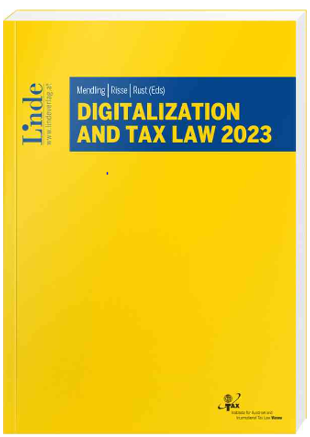Tax Function Excellence and Artificial Intelligence Models
Introduction
The transformative potential of artificial intelligence (AI) within the tax function has become undeniable. From processing thousands of transactions with near-perfect accuracy in seconds to facilitating strategic decision-making, AI is reshaping the way tax professionals operate. By offloading routine tasks, tax practitioners can focus on value-added areas such as governance, management, and planning. As AI technologies advance, their application to tax processes is expanding exponentially, enabling tax leaders to analyze massive amounts of compliance-relevant data with unparalleled precision and speed.
Modern AI models, including traditional machine learning and cutting-edge large language models (LLMs), are bringing additional value to tax expertise. These systems involve algorithms that learn from data, making predictions and decisions based on patterns they identify. While structured data tasks such as classification and regression have long been the domain of AI, newer applications now extend to understanding context and generating human-like text for tax compliance and planning.
Tax Function Excellence and AI Models Today
1. Classical AI Models
Classical AI models excel in structured data environments. These models analyze transaction descriptions and details to classify them into predefined tax categories or "buckets." To achieve this, AI systems rely on structured datasets—clearly defined and organized data such as tables, spreadsheets, and relational databases.
For example, a classical AI model might categorize invoices into VAT-exempt, reduced-rate, or standard-rate categories by analyzing their descriptions. These systems are particularly effective for tackling routine tasks like document intelligence and classification, freeing up tax professionals to focus on more strategic activities. However, they struggle with unstructured data, such as text-heavy documents or ambiguous data points, limiting their application in more complex scenarios.
2. Large Language Models (LLMs)
Large language models represent a leap forward in AI capabilities, leveraging transformer architectures to handle vast datasets and perform natural language processing (NLP) tasks. LLMs like OpenAI's GPT models or similar systems trained on tax-specific cases can extract critical tax-relevant information buried in unstructured data.
For instance, an LLM can scan lengthy contracts, identify clauses with tax implications, and summarize key points in seconds. This automated process is not only faster but also more accurate than manual review. Additionally, LLMs can classify tax data, identify anomalies, and recommend corrections. For tax leaders, integrating LLMs into their processes requires a robust, standardized data pipeline to ensure clean, AI-ready data—a critical step in maximizing the model's effectiveness.
3. Retrieval-Augmented Generation (RAG) Models
Retrieval-augmented generation (RAG) models push the boundaries of AI’s utility in the tax function. These models combine the generative capabilities of LLMs with real-time access to data repositories. The result is an AI system capable of providing nuanced, context-aware answers to complex tax queries.
For example, a tax professional might ask a RAG model to analyze a dataset of cross-border transactions and identify compliance risks under various jurisdictions. The model retrieves relevant data, generates insights, and even proposes solutions. This application is particularly useful for improving tax compliance management systems and enhancing internal control frameworks.
Moreover, RAG models contribute to fostering a compliance culture within organizations. By integrating compliance objectives into business operations, these systems ensure that tax policies align seamlessly with corporate goals and regulatory requirements.
Future Perspectives: Complex Analyses and Tax Planning
The most transformative potential of AI in the tax function lies in its ability to assist with tax planning and decision-making. Beyond document classification and compliance, AI can analyze complex tax relationships, incorporate historical data, and generate innovative strategies.
Proactive Tax Recommendations
AI models can process data inputs such as regulatory laws, corporate performance metrics, and strategic objectives to offer proactive tax recommendations. For example, an AI system might flag a regulatory change affecting the company’s operations and propose strategies to mitigate its impact.
Scenario Analysis
Advanced AI models can perform scenario analysis, including:
• Assessing a firm's risk profile to identify vulnerabilities.
• Evaluating legal and regulatory constraints that impact tax strategies.
• Calculating Net Present Value (NPV) to determine the long-term financial impact of various tax scenarios.
For instance, if a company aims to optimize its cash flow, AI can propose actionable strategies to meet this goal effectively.
Enhanced Tax Strategy Alignment
AI also aids in aligning tax strategies with broader corporate objectives. By integrating tax planning into financial and operational decision-making, businesses can achieve greater strategic coherence, reduce risks, and maximize opportunities.
Challenges and Considerations
While the benefits of AI in the tax function are immense, organizations must address certain challenges to fully realize its potential:
1. Data Quality and Accessibility: Clean, well-organized data is the foundation of effective AI models. Tax leaders must invest in data cleansing and pipeline standardization.
2. Ethical and Regulatory Compliance: AI systems must operate within legal and ethical boundaries, particularly when dealing with sensitive financial data.
3. Change Management: Adopting AI requires a cultural shift, as tax professionals must learn to work alongside AI tools while embracing new ways of thinking and problem-solving.
Conclusion
Artificial intelligence is revolutionizing the tax function, transforming it into a hub of innovation and strategic value. From automating routine tasks to offering sophisticated tax planning insights, AI empowers tax leaders to achieve unprecedented efficiency and effectiveness.
The integration of AI technologies—classical models, large language models, and retrieval-augmented generation systems—enables tax professionals to streamline operations, ensure compliance, and craft forward-looking strategies. By proactively embracing AI, tax leaders position their organizations to remain competitive and adaptable in an increasingly complex global landscape.
However, success depends on preparation. Organizations must prioritize data quality, invest in robust AI infrastructures, and foster a culture of collaboration between technology and human expertise. With these foundations in place, AI can help tax leaders not only meet today’s challenges but also shape the future of tax excellence.




